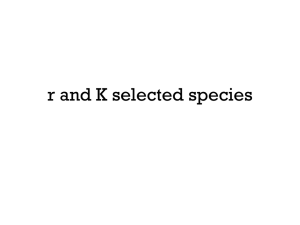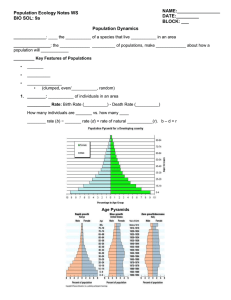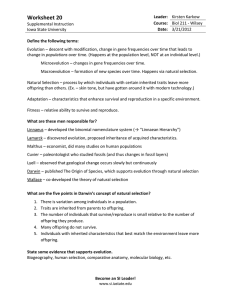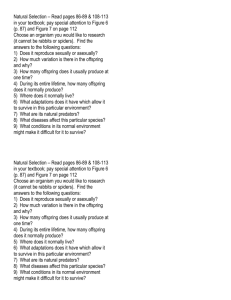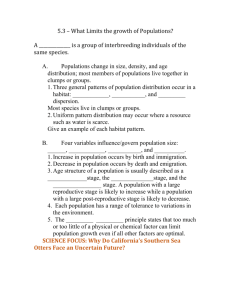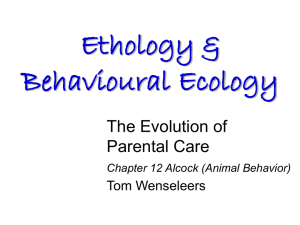Population Growth and Stresses PPT
advertisement
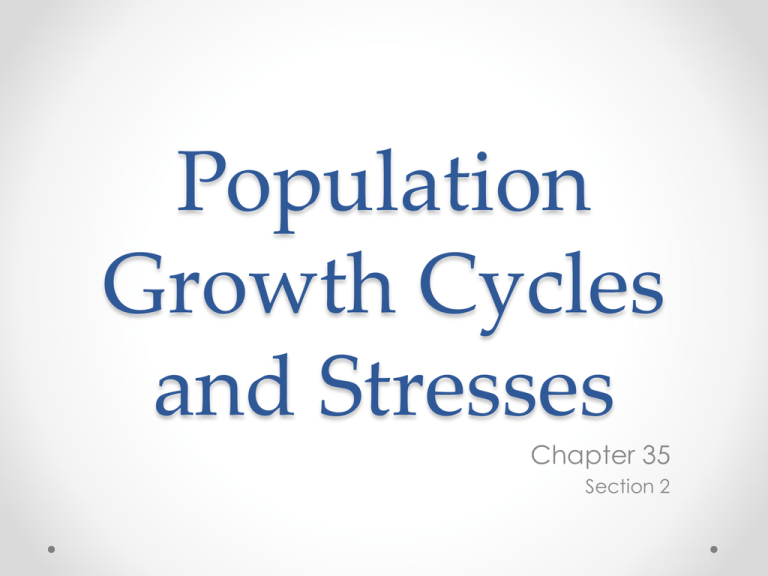
Population Growth Cycles and Stresses Chapter 35 Section 2 Population Growth No Population Can Grow Indefinitely: J-Curves and S-Curves Biotic potential – capacity for population growth under ideal conditions o Larger organisms tend to have low potential Intrinsic rate of increase (r) – rate the population of a species would grow if it had unlimited resources J-Curves Individuals in populations with high r o o o o Reproduce early in life Have short generation times Can reproduce many times Have many offspring each time they reproduce Population Stresses Any population growing exponentially goes through a “J” shaped growth, but most of the time environmental influences create an “S” shaped pattern in growth S-Curves Environmental resistance – combination of all factors that act to limit the growth of a population Carrying capacity (K) – maximum population of a given species that a habitat can sustain indefinitely without being degraded Carrying Capacity and J shaped growth This shows exponential growth leading to overshoot and population dieback of a species Phases of Logistic Growth Curve 1. Lag Phase – little initial growth. 2. Rapid Growth Phase 3. Stable Phase – stabilizing factors limit growth Species Reproductive Patterns • r-Selected species, opportunists – species with a capacity for a high rate of population increase o Many small offspring o Little to no parental care or protection o Reproductive opportunists • K-selected species, competitors – reproduce later in life and have a small number of offspring with fairly long life spans o Few large offspring o High parental care r- and K- selected Organisms r K Unstable environment, density independent Stable environment, density dependent interactions small size of organism large size of organism energy used to make each individual is low energy used to make each individual is high many offspring are produced few offspring are produced early maturity late maturity, often after a prolonged period of parental care short life expectancy long life expectancy each individual reproduces only once individuals can reproduce more than once in their lifetime most of the individuals die within a short time but a few live much longer most individuals live to near the maximum life span Courtesy of www.bio.indiana.edu Positions of r- and K-Selected Species on the SShaped Population Growth Curve Types of Population Change • Stable – population fluctuates slightly above and below its carrying capacity o Characteristic of undisturbed rain forests o Late loss curve • Irruptive – short-lived rapidly reproducing species o Linked to seasonal changes in weather or nutrient availability o Algal Blooms o Early loss curves S-Curve Fluctuations Types of Population Change • Cyclic fluctuations, boom-and-bust cycles o Top-down population regulation • Controlled by predation o Bottom-up population regulation • Controlled by scarcity of one or more resources • Irregular – changes in population size with no recurring pattern o chaos r-Curve Fluctuations Top-down Regulation Survivorship Curves These curves demonstrate o Type I: Late Loss Populations (K – strategists) o Type II: Constant Loss Populations (K – strategists) o Type III: Early Loss Populations (usually rstrategists) Video for Review
